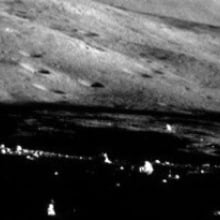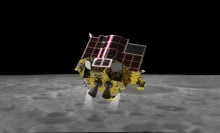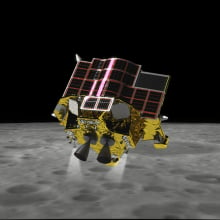NASA's first astronaut mission into deep space and around the moon won't happen this year, agency officials say, citing several technical and hardware issues that could jeopardize crew safety.
The announcement of a delay for the Artemis II mission, previously slated for this November, came during a news teleconference on Jan. 9. The space agency is now working toward a September 2025 launch, with Artemis III, the first moon-landing attempt with astronauts in a half-century, also pushed back to September 2026.
Building extra time into the schedule will allow engineers to conduct more tests on the Orion moonship, Space Launch System rocket, landing system, new spacesuits, and Gateway, a yet-to-be-built lunar space station. NASA officials said new circuitry and battery issues have surfaced that will need to be addressed, and they continue to investigate a problem with the spacecraft's protective heat shield.
"We are facing challenges, both technical and just dealing with going back to the moon, but the Artemis team is solving them," said Jim Free, NASA associate administrator.
Tweet may have been deleted
The Artemis II mission is expected to build upon the success of Artemis I, an uncrewed test flight of Orion that sent the moonship on a 1.4 million-mile voyage in 2022. The sequel mission will test-drive the spacecraft for about 10 days with human passengers, whizzing by the moon without ever landing on it.
A successful Artemis II flight would pave the way for NASA to put astronauts back on the lunar surface during Artemis III. The agency has promised that mission will see a woman and person of color walk on the face of the moon for the first time.
Even if Artemis II had not required extra time, the subsequent moon-landing mission would still need to be delayed because of lagging SpaceX progress, according to NASA. The space agency tapped billionaire Elon Musk's company to develop a human landing system version of his Starship with a $4 billion contract for Artemis III and IV.
"We are facing challenges, both technical and just dealing with going back to the moon, but the Artemis team is solving them."
As part of the deal, SpaceX will need to demonstrate an uncrewed test flight to the moon beforehand. So far the company has attempted two Earth-orbiting flights, with both Starships exploding before reaching space.

The Artemis II crew, announced last year, includes NASA astronauts Reid Wiseman, Victor Glover, and Christina Hammock Koch, along with the Canadian Space Agency's Jeremy Hansen. They are expected to become the first people to fly into deep space since the United States' final Apollo mission in 1972.
NASA's decision to delay Artemis II was first hinted at publicly during a call with reporters in August, when space agency officials said they were still investigating damage to the spacecraft's heat shield that occurred on its way back to Earth. Though the crew registered concern about the problem, NASA declined to discuss a final diagnosis — or any changes to plans because of it — until early this year.
"You know every time you see me coming, you take a step back, because I'm coming about the heat shield," said Wiseman, the Artemis II crew commander, during that call. "This crew, we're not going to launch until we know we're ready, until our team knows the vehicle's ready, and we will keep the pressure on."

During the maiden voyage, Orion came home faster and hotter than any spacecraft prior, traveling at 24,500 mph in 5,000 degree Fahrenheit temperatures. NASA expected to see some charring, but not to this degree, said Howard Hu, manager of Orion, about a year ago.
"We're seeing larger, like, more little pieces that are coming off versus being ablated," he said then, referring to a type of heat-driven evaporation engineers expected.
NASA continues to study the heat shield and now says it will present its final analysis this spring. But regardless of the unexpected damage, if astronauts had been inside Orion during Artemis I, they would not have been harmed, Amit Kshatriya, deputy associate administrator of the moon-to-Mars program, told Mashable during the teleconference.

"They would have not sensed any disturbance inside the vehicle, there would not have been any excessive heating on the structure, and the guidance would have put them exactly where the Navy needed to recover them," he said. "There would not have been any impact toward the crew safety if we had that exact same design."
The Artemis II foursome are anticipated to hold a place in history as the first space travelers of Artemis, the new exploration campaign named after Apollo's goddess twin. It's the beginning of NASA's ambitious plan to send humans to Mars by the late 2030s, preparing them for the harsh conditions of another world far less hospitable than Earth.
Topics NASA































